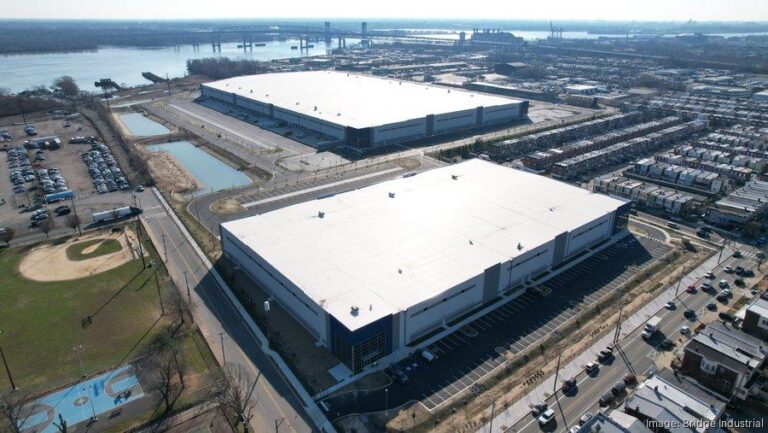Philadelphia’s Industrial Real Estate Market: A Rising National Powerhouse
Philadelphia is swiftly establishing itself as a leading force in the United States industrial real estate arena. Thanks to its prime geographic positioning, advanced infrastructure, and surging demand for logistics and distribution facilities, the city is attracting substantial investment from both domestic and global players. As supply chain efficiency becomes paramount for businesses, Philadelphia’s industrial sector is evolving into a critical nexus for warehousing and fulfillment operations. This article examines the key elements driving Philadelphia’s industrial real estate growth and the implications for the city’s economic trajectory.
Philadelphia’s Strategic Advantage in the Industrial Real Estate Sector
Positioned advantageously along the East Coast, Philadelphia benefits from close access to major ports, highways, and rail networks, making it an ideal distribution hub for companies targeting the northeastern U.S. market. The city’s infrastructure investments have enhanced connectivity and operational efficiency, drawing a diverse range of logistics and manufacturing firms. Moreover, Philadelphia offers competitive leasing rates and ample developable land near vital transportation corridors, which further incentivizes industrial development.
Several factors underpin Philadelphia’s industrial real estate momentum:
- Rapid expansion of e-commerce: fueling demand for large-scale fulfillment centers and last-mile delivery hubs
- Cost-effective leasing options: providing attractive alternatives to more saturated markets like New York and Boston
- Availability of strategically located land: enabling new construction close to key transport nodes
- Robust labor market: supplying skilled workers for warehouse and distribution operations
| Metric | Philadelphia | U.S. National Average |
|---|---|---|
| Industrial Vacancy Rate | 4.8% | 6.5% |
| Average Lease Rate (per sq. ft.) | $6.85 | $7.30 |
| New Industrial Space Delivered (2023) | 5.1 million sq. ft. | 3.9 million sq. ft. |
Driving Forces Behind Philadelphia’s Industrial Real Estate Expansion
The surge in Philadelphia’s industrial market is fueled by a blend of geographic benefits and forward-thinking infrastructure enhancements. The city’s proximity to major transportation arteries—including I-95, the Philadelphia port complex, and extensive rail lines—facilitates seamless distribution across the Northeast and beyond. This connectivity is a magnet for logistics companies aiming to optimize supply chains.
Additionally, Philadelphia’s thriving e-commerce sector has accelerated the need for modern warehouse facilities, prompting developers to ramp up construction efforts. The city’s supportive zoning regulations and incentive programs further encourage industrial growth, making it easier for businesses to establish and expand operations.
Environmental sustainability is also becoming a priority, with many new industrial developments incorporating green building standards and energy-efficient technologies. This focus not only meets corporate social responsibility goals but also reduces long-term operating costs, enhancing the appeal of Philadelphia’s industrial parks.
| Indicator | Philadelphia | Comparable Cities Average |
|---|---|---|
| Vacancy Rate | 3.8% | 6.0% |
| Annual Rent Growth | 8.2% | 4.5% |
| New Industrial Construction (sq. ft.) | 4.7 million | 3.0 million |
- Extensive multimodal transportation access
- Proactive municipal policies and incentives
- Skilled workforce tailored to logistics and manufacturing sectors
- Rising e-commerce-driven demand for distribution centers
- Commitment to sustainable and adaptable industrial infrastructure
Opportunities and Obstacles for Philadelphia’s Industrial Developers
While Philadelphia’s industrial real estate market presents lucrative opportunities, developers must navigate several challenges. The city’s advantageous location and infrastructure attract significant investment interest, but escalating construction costs and limited availability of large, contiguous parcels of land pose hurdles. Additionally, regulatory complexities and zoning restrictions can delay project timelines, requiring strategic planning and collaboration with local authorities.
Repurposing older industrial buildings to meet modern logistics requirements demands innovative design and capital investment. Developers are increasingly exploring vertical expansion and adaptive reuse to maximize limited land resources while aligning with sustainability goals.
Key challenges and potential solutions include:
| Challenge | Effect | Mitigation Strategy |
|---|---|---|
| Rising Material and Labor Costs | Increased overall project expenses | Establishing supplier partnerships and bulk procurement |
| Scarcity of Large Land Parcels | Constraints on new development scale | Utilizing vertical construction and adaptive reuse of existing structures |
| Lengthy Zoning and Permitting Processes | Extended project delivery timelines | Early and ongoing engagement with city planning agencies |
Maximizing Returns in Philadelphia’s Expanding Industrial Market
Investors and developers aiming to capitalize on Philadelphia’s industrial growth should prioritize sites with excellent access to transportation networks, including highways, ports, and rail lines. Properties designed with flexibility—such as modular layouts and scalable warehouse spaces—can accommodate a variety of tenants, from e-commerce fulfillment centers to cold storage facilities.
Collaborating with local government programs that support sustainable construction and workforce training can enhance project feasibility and community integration. Staying attuned to emerging trends, such as the rise of last-mile delivery services and the increasing need for temperature-controlled logistics, will enable stakeholders to tailor their investments for long-term success.
- Focus on proximity to major transport corridors to optimize logistics efficiency
- Design adaptable industrial spaces to meet evolving tenant requirements
- Leverage municipal incentives and workforce initiatives to reduce costs and improve labor access
- Monitor sector trends including e-commerce growth and cold chain logistics
| Strategic Focus | Advantage |
|---|---|
| Location Near Ports and Highways | Lowered transportation and distribution costs |
| Flexible Property Design | Attracts a broad tenant base |
| Green Building Incentives | Reduced operational expenses and environmental impact |
| Workforce Development Programs | Access to skilled labor pool |
Conclusion: Philadelphia’s Industrial Real Estate Outlook
Philadelphia’s ascent as a dominant player in the industrial real estate market is underscored by its strategic location, comprehensive infrastructure, and supportive economic policies. The city’s ability to attract investment and meet the evolving needs of logistics and distribution sectors positions it for sustained growth. As industrial demand continues to rise, Philadelphia stands ready to solidify its role as a premier hub in the national industrial landscape, offering promising opportunities for investors, developers, and businesses alike.








